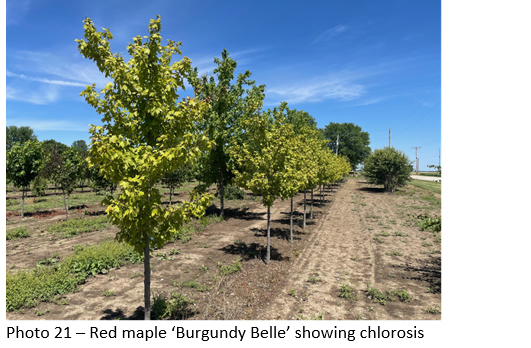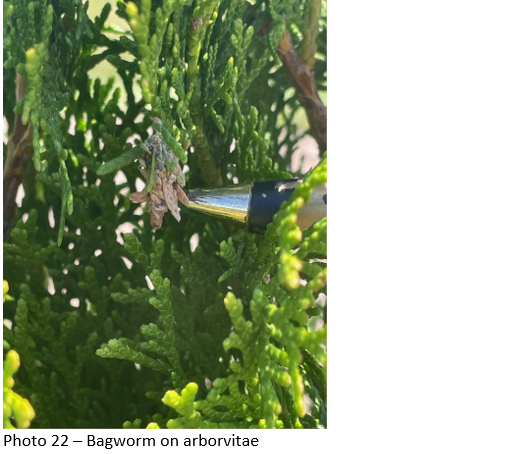This informal report by the Division of Entomology & Plant Pathology is a commentary on insects, diseases, and curiosities division staff encounter on a week-to-week basis. Comments and questions about this report are welcome and can be sent to your respective Inspector.
Our Website
Inspector Territories
Angela Rust (Nursery Inspector & Compliance Officer) -
I’m sharing some photos of woolly apple aphid (Eriosoma lanigerum) on Gala apple. The ‘woolly’ part of the name is in reference to the waxy, cottony secretions produced by these insects, which help hide them from predators. You will notice clusters of white, cottony masses on tree limbs and trunks. Inside the masses are light, purple-colored aphids. Woolly apple aphids feed above and below the ground. Root feeding by aphids causes the most damage, particularly to young trees. Root feeding results in the development of galls that block the movement of nutrients. Yellow foliage, especially on young trees, may be a sign of root infestation by woolly apple aphid. Infestations of this pest warrant control, especially on young trees.

Will Drews (Nursery Inspector & Compliance Officer) -
I’ve found a couple of interesting scale insects recently during inspections. Most recently, I noticed some peculiar spots on black gum ‘Wildfire’ leaves. On closer inspection, they were being caused by little scale insects feeding on them. These scale insects are most likely black gum scale (Chionaspis nyssae). This species is a type of armored scale in the family Diaspididae. Armored scales protect themselves by creating a made of wax and other excrements. The female scales tend to have bigger and rounder coverings than the males, where they’ll lay their eggs. Armored scales are sap suckers and will feed on the fluids in plant leaves, petioles, and stems. Unlike soft scales, armored scales do not produce honeydew. Black gum scale is relatively specialized, usually only feeding on its namesake, its relative water tupelo, and a handful of other tree species.
The other scale insect I found recently was on honey locust trees. It has a similar appearance to black gum scale—albeit a little smaller—but with some more prominent ridges on the waxy covering. I’m inclined to believe that it is honey locust scale (Chionaspis gleditsiae), which specializes on honey locusts and a few other tree species. That would mean that this is another armored scale species, closely related to black gum scale.
Armored scale insects in high enough populations can cause significant damage to ornamental, shade, and fruit tree species. Dormant oil applications can be used in the dormant season to control overwintering scales on the trunks and branches. During the growing season, a number of products can be used to treat crawlers (just make sure the product mentions the ability to control armored scales on the label).
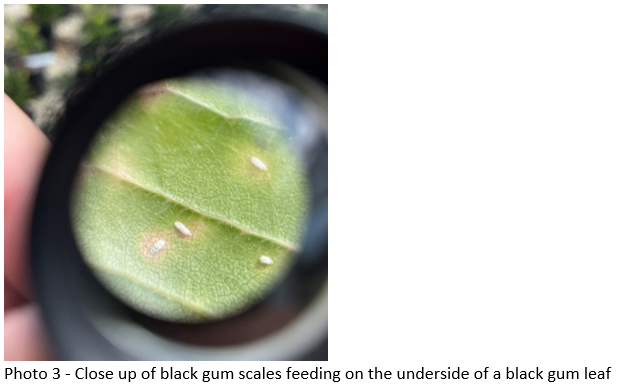
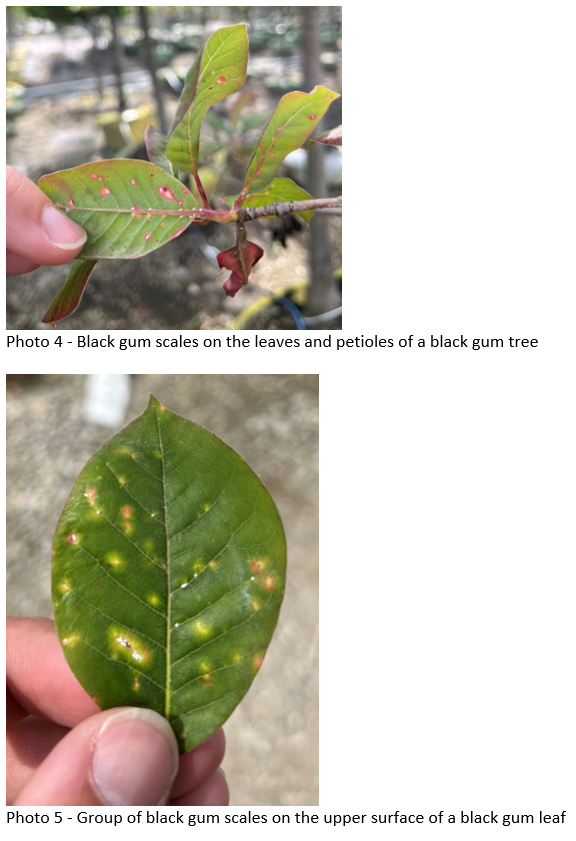
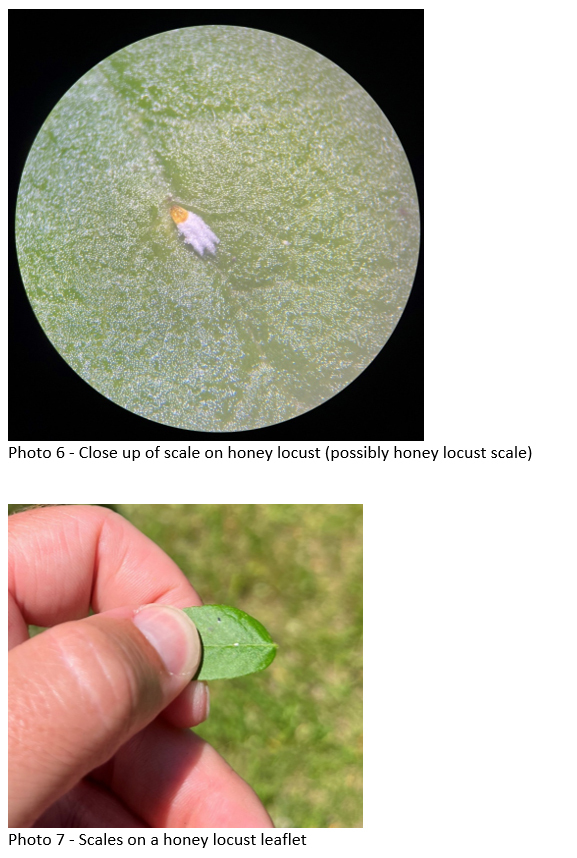
Vince Burkle (Assistant Division Director & Nursery Inspector) -
We have newly detected spotted lanternfly populations near Waterloo in DeKalb County and Kendallville in Noble County. Please be on the lookout for this insect and submit any findings to our new spotted lanternfly reporting tool.
We are also noticing the 4th instar nymphal stage of spotted lanternfly in Huntington. This is when the nymphs develop red and black body coloration with white spots.

Jared Spokowsky (Nursery Inspetor & Compliance Officer) -
I have not seen much in the way of new pests this week, so it’s going to be mainly bee related info again. A lot of our summer flowers are really starting to bloom now. Mountain mints and hyssop are both just starting at my place. Both are HIGHLY attractive to honeybees as well as other pollinators. I was also fortunate to capture a honeybee working blazing star and to my surprise, it has white pollen. Blazing star isn’t particularly high on the honeybee list, but I thought it was cool anyway. I received calls from beekeepers who were afraid they had American foulbrood, but it turned out to be European in both instances. When differentiating between American and European it is important to remember that European foulbrood kills before the cells are capped while American foulbrood kills predominately after the cells are capped.
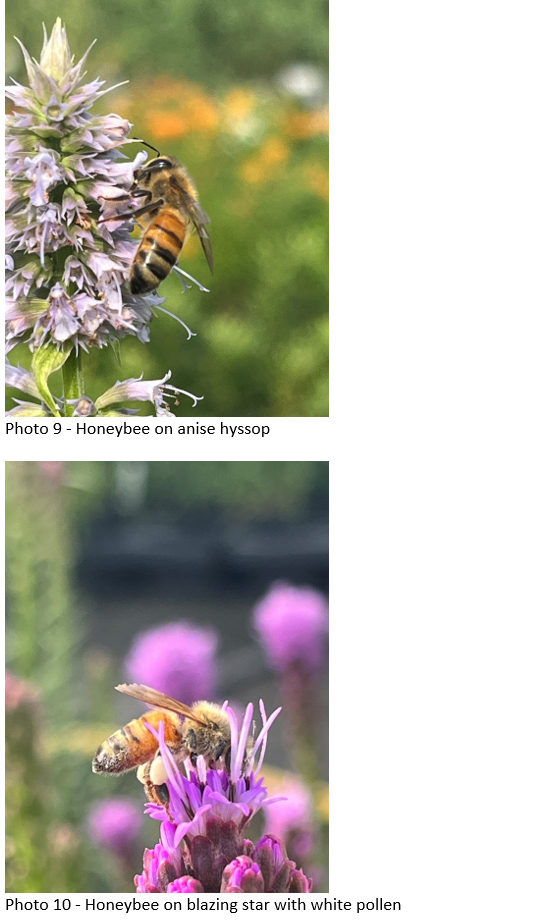
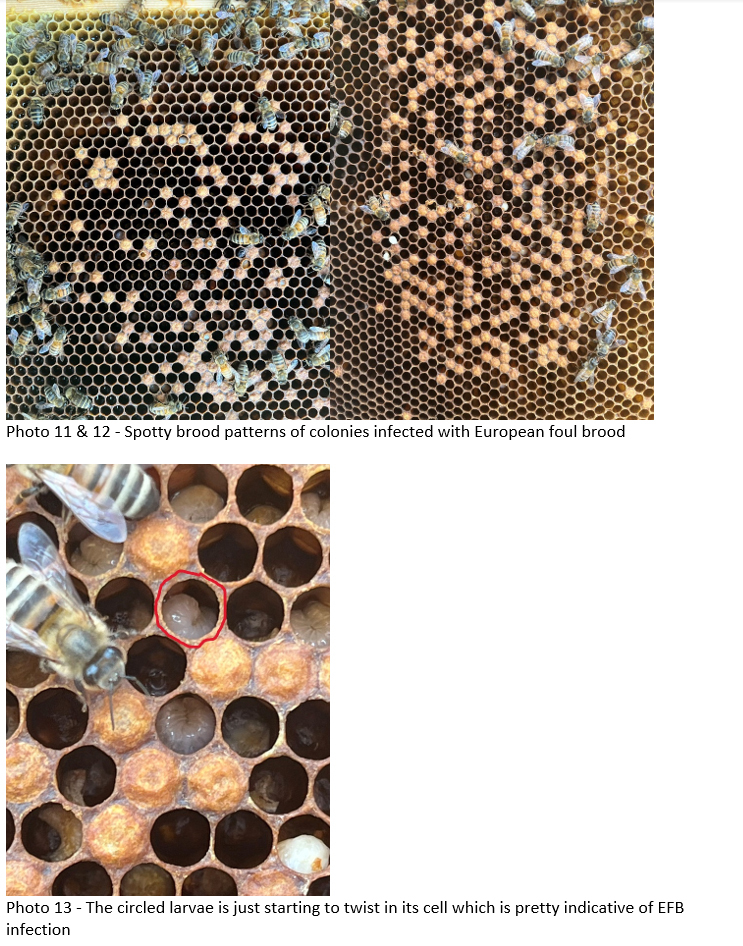
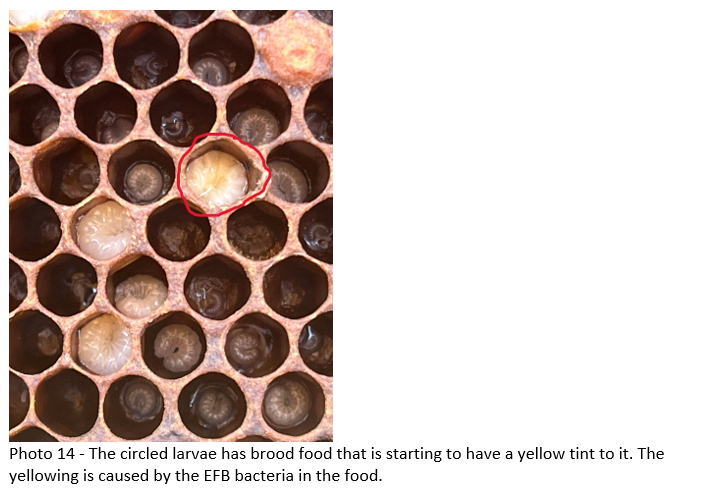

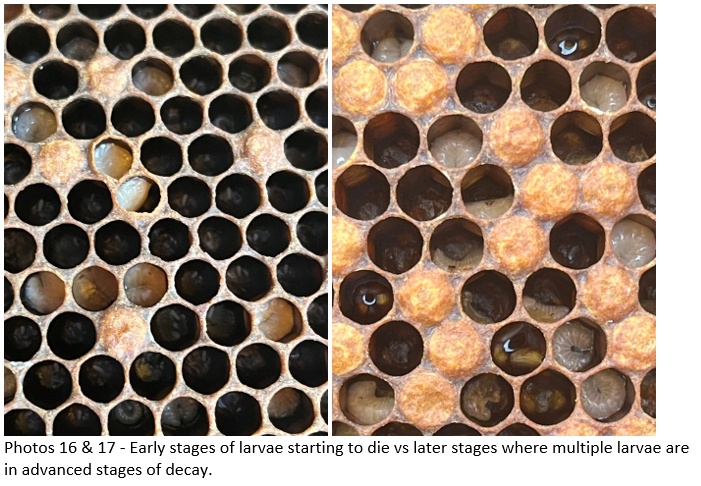
Kristy Stultz (Nursery Inspector & Compliance Officer) -
The Division of Entomology & Plant Pathology had the opportunity to spend some time at the Indiana Black Expo last week. We had a fantastic time chatting with folks about spotted lanternfly.
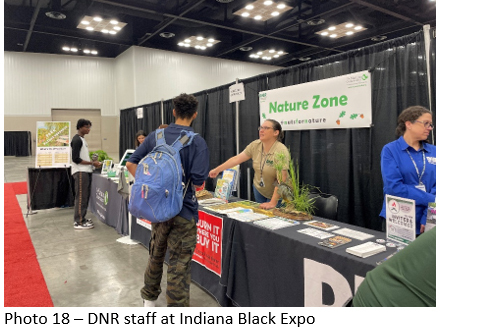
This past week, I saw more mite damage on arborvitae, but the mites seem to have vacated the premises, at least for now. On oaks, I found jumping oak gall and oak hedgehog gall, neither of which were in any great abundance. I did see one Ailanthus webworm moth (Atteva aurea) also just hanging out on the oaks.
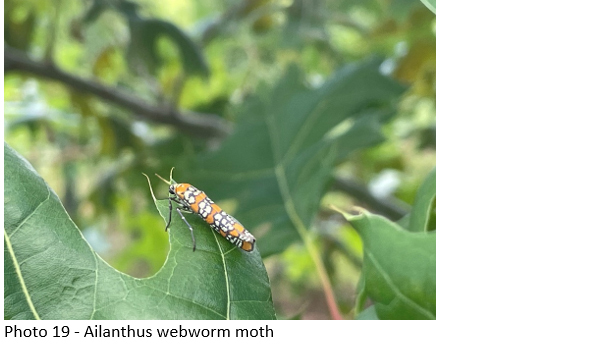

Phil Marshall (State Forest Health Specialist) -
I have had Japanese beetle adults mating and feeding on my peach trees since last week. There is also some feeding on apples but not much.
The first report of an adult spongy moth was a female moth found on a white oak in Fort Wayne. This is the first time a female moth was reported before a male moth. The female had laid eggs, so the male flight likely started June 22 or 23. Male spongy moth emergence was verified on June 27 based on reports from trap tenders checking traps. The first reports were from Fort Wayne and South Bend.
Eric Biddinger (Nursery Inspector & Compliance Officer) -
I have seen a lot of irrigation and watering issues over the last couple of weeks. In the middle of that hot, humid streak through mid-June, I was actually seeing a good bit of overwatering. The humidity was so high that plants struggled to move water through transpiration. Now that the temperature has broken it is even more important to pay attention to watering. Plants may be transpiring more water on these cooler, sunny, windy days with lower humidity. I’ve always been an advocate for watering containers based on weight. Pick up a few containers before you water. You might be surprised at the weight difference even across a single bench or table.
Has anyone else noticed issues with the red maple ‘Burgundy Belle’? The last few times I have seen this cultivar in nurseries, they have been almost uniformly chlorotic, especially when compared to other maple cultivars. I think they might not be well adapted for some of our heavier clay soils. This is something I will be looking at going forward.
